The Story Behind Alice In Wonderland
Exclusive cast interviews take us down the rabbit-hole...
On 24 February, 2010, the British Library held an event celebrating not only the release of Tim Burton’s Alice In Wonderland (in cinemas today), but also the legacy of Alice herself.
Having painstakingly restored the first ever Alice film from 1903, with a little help from their BFI friends, the Library unveiled the restored footage for the very first time ( you can watch it online for free ).
Directed by Cecil Hepworth and Percy Stow, the 12-minute film was made just 35 years after Lewis Carroll’s original book was published, and a tiny eight years after the birth of cinema.
There to celebrate the restoration was writer Will Self along with a few members of Burton’s cast, including Michael Sheen (who voices the White Rabbit), Christopher Lee (lending his inimitable tones to the fearsome Jabberwocky) and legendary Hollywood producer Richard Zanuck.
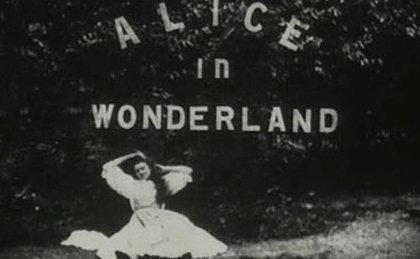
We were lucky enough to nab time with them, along with Helena Bonham Carter, in order to discuss their take on the classic tale. What was it like to recreate such iconic characters? What are their thoughts on the original novel? What does it mean if you’re suffering from The Greens?
“I’ve not seen it,” Lee tells us of his CGI monster. “Nothing at all. I don’t even know what my character looks like... probably rather nasty." Still, we're not going to let that stand in our way. "Tim asked me if I’d do it, and I really would do anything for him.”
Sounds magical. Let’s go...
Bringing all the latest movie news, features, and reviews to your inbox
Next: Down The Rabbit-Hole [page-break]
Down The Rabbit-Hole
Quite a commendation. But Lee wasn’t really alive when Alice’s Adventures In Wonderland was first published in 1865 (we think).
Originally entitled Alice’s Adventures Under Ground , scholarly mathematician Charles Lutwidge Dodgson – under the pseudonym Lewis Carroll – wrote the story after entertaining the daughters of an Oxford University Vice-Chancellor with it. One of those daughters was called Alice.
The book ran with an initial print of 2,000, replete with illustrations by John Tenniel. It was an instant best-seller, gaining fans in Queen Victoria and Oscar Wilde – who were decidedly, it’s important to note, not children.
“One thing that I’ve realised over the years as I’ve read it more and more,” says Lee. “Is that it’s not really a children’s book. Because the deeper you get into it, the more adult it seems to become. It’s actually a very frightening thing in certain places.”
A prime example of a genre known as ‘literary nonsense’, Alice’s Adventures In Wonderland inverts the logic of our everyday world: flowers talk and Alice constantly changes size, among other very odd happenings.
Wonderland itself is both wonderful and terrifying, at once beautiful and deadly.
“For me, there is a dreamlike aspect to the book,” says Michael Sheen. “You can’t feel the edges of this story. In the same way that it seems to be very familiar. Alice’s experiences in Wonderland mirror our experiences of the story, where things seem very familiar and then become very strange the next second. When you think you’ve got a handle on something, it shifts and becomes something else.”
The story has now been translated into 125 different languages across the globe and has never been out of print. It has often been held up as a text seething with political subtext.
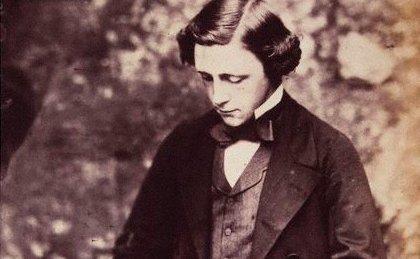
Will Self disagrees. “Some would argue that the Mad Hatter’s involvement makes the text an indictment of Gladstonian liberalism. Um, that’s not true,” he says. “We can look at the political period in the 1860s for all sorts of pointers of what might have been on Dodgson’s mind, and there are some very political references, but actually you have to dig quite hard for them.
“It’s a universal satire, in a way. It’s a satire of power. Of course, the Red Queen, who becomes in a sense the main character in Tim Burton’s version, is the focus of the critique that, if you let it run, can be seen as criticism of absolutist monarchy.”
Sheen has a different take on the themes twisting through the tome. “It seems to me that it’s what a child’s experience of adulthood must appear to be,” he says. “On the one hand you’re constantly being told everything’s alright, everything’s been made safe for you, everything’s fine.
"Then suddenly somebody’s shouting at you for no reason. So the world must seem like a very shifting place.
“It also expresses some deeper truth about our experience of the world. We agree that the world should be a civilised place, that there are certain rules that we abide by, and actually the world is an incredibly frightening place and is out of control most of the time. I think Carroll somehow manages to tap into that.”
“I was going to say exactly the same thing,” jokes Lee.
Next: Much A-Do About Muchness [page-break]
Much A-Do About Muchness
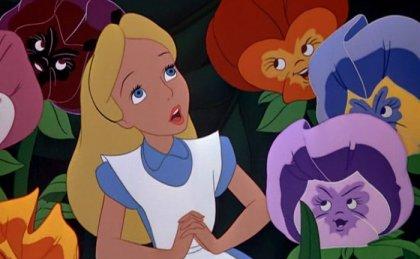
"None of the other versions have really been any good, quite frankly,” says producer Richard Zanuck.
He’s talking about the films. And he should know, having produced such timeless classics as The Sound Of Music , Jaws and the last five of Tim Burton's films.
Before Burton came along, there were 24 completed versions of Alice In Wonderland already committed to celluloid, including a pornographic interpretation, an anime TV series and a surrealist film directed by Jan Švankmajer, who combined live-action with stop-motion.
Of them all, the most famous remains Disney’s 1952 animated yarn.
Incorporating characters like Tweedledum and Tweedledee, who actually only appear in the book’s sequel Through The Looking Glass, And What Alice Found There , it was directed by Clyde Geronimi, Wilfred Jackson and Hamilton Luske, and is still viewed as one of the finest interpretations of the book.
So, where to go for a new live-action version of the tale? Um, sequel?
“As a movie, it’s always been about a passive little girl wandering around a series of adventures with weird characters,” Burton has said of the original. “There’s never any kind of gravity to it.”
Enter screenwriter Linda Woolverton with a neat idea: let Alice grow up! Having penned '90s Disney hits Beauty And The Beast and The Lion King , Woolverton found a new gateway into the story that would add dramatic weight while taking the themes of the original and expanding on them afresh.
“Alice has been suffocated by the society, she’s seen as eccentric for her own time,” explains Helena Bonham Carter, who plays the temperamental Red Queen. “It’s about Alice finding herself and working out who she is and what she wants to do with her life. They haven’t too mangled the original, it’s all the same themes about identity and growing up and working out who she is.”
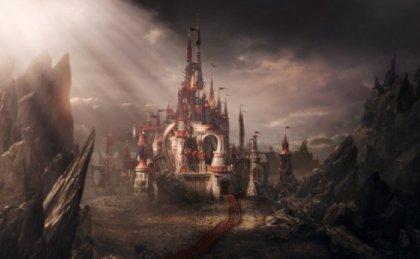
Continues Woolverton: “Alice is about to enter into marriage and she’s not sure about it. Time has passed. The Red Queen rules the whole land. It’s under her thumb. And the people of Underland need Alice.”
Wait, Underland? Yes, in another crafty twist, it turns out that Alice misheard the name of this intriguing place when she was a child. It’s not Wonderland at all, but Underland.
For Disney, there was only one man equipped with the skills to handle the demands of Wonderland, and the imagination to bring it to suitably vibrant (and crazy) life.
“Tim was the perfect person to take us into that world, to meet these bizarre, very interesting, amusing characters,” says Zanuck. “I wouldn’t want to go to that place with any other director, quite frankly.
“This was a blank piece of paper, a piece of raw stock into every frame of which he planted his imagination. Frame by frame. Took him three years.”
It's a perfect fit; Burton’s kooky, colourful imagination paired with the zany world first laid out by Lewis Carroll.
And for actors like Lee and Sheen, long-time fans of the original text, being asked to get involved was a dream come true.
“I’ve always wanted and had a passion to do the Alice In Wonderland story in some way or another,” says Sheen. “So to do it with Tim Burton was just amazing. There’s a wonderful thing in this new version of the film - there’s a question of whether Alice has lost her muchness, which I think is a fantastic phrase...”
Next: We're All Mad Here [page-break]
We’re All Mad Here
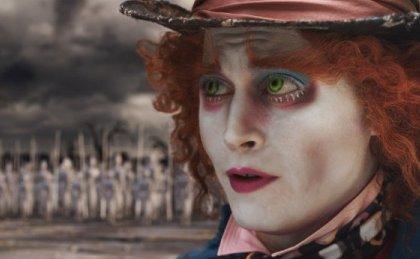
“Yes, it is entirely a voice-over,” intones Christopher Lee, who has the perfect voice for the intimidating and really-quite-scary Jabberwocky.
In the whole film, he utters just two lines, both gleaned from Carroll’s original Jabberwocky poem. It amounted to about an hour’s work. Tough break, eh? “Absolutely exhausting, yes,” the actor deadpans. “But it’s better to have two than to have none.”
Casting the film, first on Burton’s list was, naturally, long-standing collaborator Johnny Depp. “I’m a huge fan of the book,” Depp has said. “It’s such a beast in terms of invention, of literary achievement. It’s as brilliant and as fresh and as new and as interesting today as it was then.”
With Depp all but a given for the Mercury-poisoned Mad Hatter, who would Burton turn to for his support cast of CGI characters?
The cream of the British crop, of course. With Matt Lucas taking on the dual role of the Tweedles, Alan Rickman was signed as the Blue Caterpillar, while Stephen Fry lent his voice to the part of the Cheshire Cat.
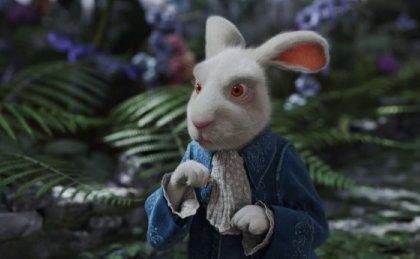
For Sheen, the role of the White Rabbit posed an interesting departure from his more adult roles.
Lee, meanwhile, was happy with his two lines. “You wouldn’t describe it as a major contribution, but hopefully it will mean something. That’s the most important thing. What you do in a day, less than a day, people remember, and it means something to the story. I accept every part I play on that basis.”
Next: How Do You Solve A Problem Like Alice? [page-break]
How Do You Solve A Problem Like Alice?
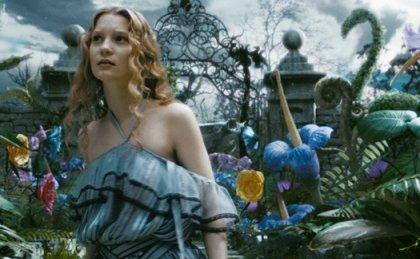
But what of Alice, our intrepid (now teenage) lead?
“Well, everybody in the world - whether they could act or not, every actress or would-be actress - put in for it,” explains Zanuck. “So we had literally hundreds volunteer. But we wanted someone very fresh, so we went on a worldwide campaign with casting people in Australia, the US, here [England] and many other places, and boiled it down to about 200 people.”
Those 200 people were gradually reduced to 40, then eight, and finally just two were left standing. Among them was a certain Mia Wasikowska. (“I was the other one,” jests Sheen.)
Adamant that they choose the best girl for the role, Burton and Zanuck took the last two girls standing and put them through a rigorous screen test.
“We did a full-blown screen test,” says Zanuck. “We hadn’t started shooting yet obviously, but we got the crew, put them together and did real live shooting with the crew. The make-up and costumes and everything to make a final decision. And it was Mia.”
Up until that point, the Australian born Wasikowska’s biggest role had been in TV drama In Treatment , though she’d also put in an appearance in Daniel Craig drama Defiance . Certified: fresh.
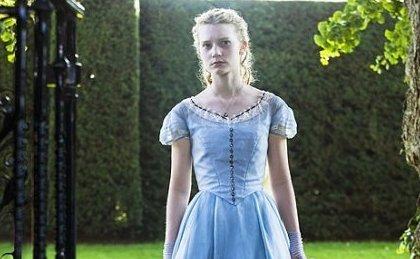
What was it that struck Burton and Zanuck about Wasikowska?
“A purity, there’s a purity about her,” Zanuck tells us. “We discovered somebody very, not beautiful in the Hollywood starlet sense, but she has an inner beauty. She’s very strong, she’s very amusing, very vulnerable at the beginning. And it was that sense of purity about her that really sold us.”
Wasikowska was overjoyed with the part. “Everyone has an idea of Alice,” she said. “And it was important to take away the baggage and make her as real a teenager as possible, but also keep some of the original aspects of her character. It’s exciting to bring those characters and stories to another generation.”
The character herself is one that continues to speak to generations of youngsters the world over.
“I have an 11-year-old daughter and she is mainly excited about two things in life: one is vampires in Twilight and the other one is Alice In Wonderland ,” reveals Sheen. “And fortunately I’m in both. Alice has a wonderful quality in the story in being incredibly courageous.
“I suppose that’s partly to do with the dreamlike quality; things that seem very, very frightening, she seems to not be fazed by. She uses this childlike, innocent courage, boldness to find her way through the world.
"It’s a brilliant indication of being a child. The fact that the original Alice is so ballsy, I think she’s a fantastic role model.”
Next: Off With Her Head! [page-break]
Off With Her Head!
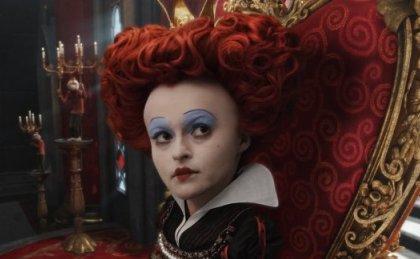
What does Iracebeth, aka the Red Queen, have in common with Mommie Dearest and toddlers? Well, they were both the inspiration for Helena Bonham Carter’s tempestuous, big-headed villain.
When she was approached for the role (by hubbie dearest), Bonham Carter promptly started studying toddlers to bring their clumsy, tantrum-inclined behaviour to the performance.
“I said I’ve got a hunch with her that she’s just not grown, she’s got arrested development,” says Bonham Carter of the Queen. “[Screenwriter] Linda said, ‘Oh yeah, that’s it.’ I’ve got a toddler now, and they just have a complete lack of empathy for any living thing. They’re savages, you know. It’s all about me. They just order and command all the time.”
At this point, Bonham Carter puts on an impeccable toddler voice. “Go away. Help me. Cah-wee me. It’s all orders. It’s like, jeeze!”
It’s a scene-stealing role, not least because Bonham Carter’s head is blown up to twice its regular size. This minor detail was one that the actress was unaware of before she read the script.
“Tim didn’t warn me,” she says of when she first picked up the screenplay. “It said: ‘Enter Iracebeth, has huge over-sized head. I mean, really huge. ’ I thought, ‘Aha, okay this is interesting.’ And I loved the fact that Tim asked me to do it. I love being cast not because of what I look like, but to be asked to change what I look like. It was perfect for me. Right up my street.”
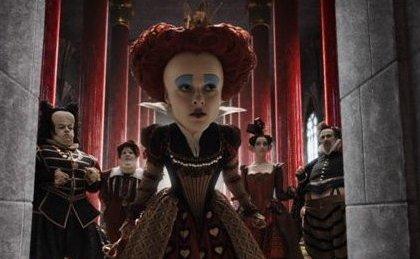
Hilariously over-the-top but also a little bit scary, you really do believe that a strop will cause the Red Queen to cut off anybody’s head (and there's not a hint of remorse). But Bonham Carter stopped short of turning Iracebeth into an all-out, bloody-minded menace.
“I just thought I don’t want to really terrify the kids totally,” she says. “She’s got to be pitiable and she’s got to be somebody they can laugh at, ‘cos otherwise it’d be too scary.”
The role is also another entry in a string of decidedly, well, insane characters that the actress has delighted in playing (at this rate she could fill an entire asylum with her back catalogue of crazies). It’s a fact that Bonham Carter’s all-too-aware of.
“Yeah, I like the same people,” she nods. “I like people who are not well; I find them much more intriguing. Like, ‘How on earth did you get there?’ Who is my favourite crazy person? I don’t know, I’ve not thought, ‘Oh, I really want to play that crazy person.’”
What about Harry Potter ’s loony Bellatrix? “Bellatrix is another child, stuck. And totally anarchic. She’s another two year old.”
Next: The Most Curious Thing I Ever Saw... [page-break]
The Most Curious Thing I Ever Saw...
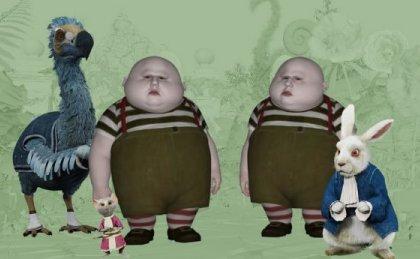
The biggest challenge regarding Burton’s new vision for Underland was actually creating it. To begin with, the filmmakers went back to Carroll’s books for inspiration. They made a mood board using the works of various artists who had painted and drawn their imaginings of what Underland looked like.
These acted as a launching pad for Burton’s creation, which presents a world that is in decline under the icy rule of the Red Queen. A haunted, slightly off-colour look was envisioned for the tortured landscape.
“The thing about Underland, like any fairy-tale land,” Burton says, “there’s good and bad. The thing I liked about Underland is that everything is slightly off, even the good people. That to me is something different.”
With the idea of going 3D resolutely in the filmmakers’ minds, it was decided that they would shoot as normal and then convert the film to 3D later.
And, of course, a heavy amount of green screen was involved, as Burton capitalised on the talents of Industrial, Light & Magic, who would build much of Underland using CGI.
“It was the most extreme,” Bonham Carter says of her experience with the green screen. “You know what, it does make you sick, green. The green screen does make you feel a bit odd. You sort of get vertigo because you don’t have a horizon, you don’t know which way’s up.
“It’s sort of like not having any gravity. And quite tiring. It’s like a really penetrative green, it’s not a lovely environmental, calm green. It’s really weird. I prefer blue screen, to be honest. Everyone felt ill, people got depressed on it. It was just like, ‘Ah, you’ve got The Greens, that’s all.’”
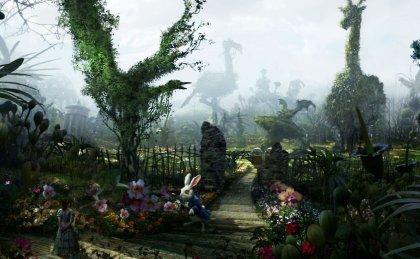
The shoot took place over 40 days, while the remaining two and a half years were spent crafting the world into which the characters were placed.
To CG cynics, Zanuck has a level-headed response.
“In Driving Miss Daisy , there was no green screen obviously, that was about two people reacting with one another,” he reasons. “That will fortunately always be true of filmmaking; we’ll always have stories where we’re invested in the characters as characters, not in their surroundings.
"But if you’re going to do Alice In Wonderland , you have to use the technology that’s available today to really do that justice. We saw what it looked like in 1903, and had they had the technology they would have used it.”
Sheen is also quick to defend the heavy use of CGI, likening the techie wizards of today with the relatively limited effects displayed in the 1903 Alice.
“What I love about the 1903 version is that they were just as proud of the special effects as we are now. That picture of the cat, it was there for ages! 'Look, we can make a cat float!'”
Next: Curiouser And Curiouser [page-break]
Curiouser and Curiouser
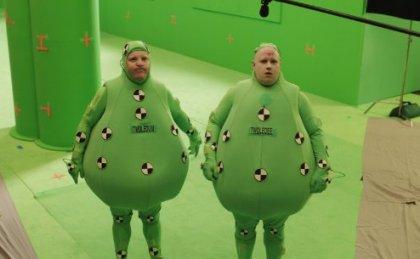
The live-action scenes that book-end Alice In Wonderland were shot on location in Cornwall, while the green stages were set up at the Culver City Studios in Los Angeles.
There, the CGI characters that would be added in later (the White Rabbit, the Blue Caterpillar) were played by actors in green suits.
Sheen quickly realised that he wouldn’t be doing an Andy Serkis/Gollum tribute and wear a dotted suit as he frolicked about on-set as the rabbit.
“I was hoping I would be able to put the tail and ears on and be jumping around the set,” the actor says. “But Tim’s idea was to make the animals look as animal-like as he possibly could.
“When I saw the film last week I realised why that’s such a brilliant move. Rather than humanising them too much, the fact that they do look like the real animals is great.”
There was still an element of performance involved for Sheen, though: he was filmed while in the sound booth recording his lines. The animators then took those recordings and applied Sheen’s body language to the CGI rabbit in order to give a fully-rounded performance.
“Tim said, ‘We’re going to film you, so make it a whole performance, don’t just think of it as a voice.’ And I thought, ‘He’s just saying that’, ‘cos I know you need green dots on you. I’ve seen Andy Serkis and Gollum.
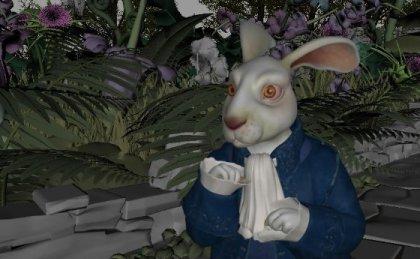
“But then when I watched the film I was amazed to see that all my hand movements are there on screen. Those are my Blair hands! I’ve obviously reached my limits as an actor, because I did for the White Rabbit what I did for Blair.”
Bonham Carter didn’t have to contend with any dots or a green costume - unlike Matt Lucas, who was in “the most hilarious costume; he was in a green ball costume with dots all over him” (above).
She did, however, have to manage her body language, as putting her hand up to her face at any point would have ruined the effects on her bulbous head.
"I didn’t have a huge head, obviously," she says. "But I was just in hair and make-up. Matt was dotty, and depending what size she was, so was Alice. Everyone was contorted. And then there were a really great bunch of actors in green costumes doing the lines for the animals, like the White Rabbit."
Next: Alice In Underland [page-break]
Alice In Underland
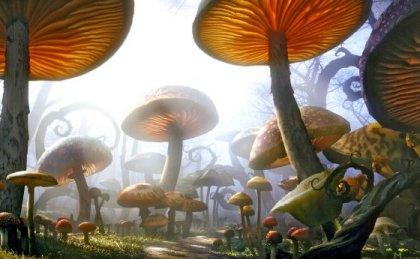
So Alice is back on screens, 145 years after her first adventure was laid down in the pages of Lewis Carroll’s original tome. What should we expect from Burton’s interpretation?
“I’ve said this before every film, but I’ll say it again,” says Zanuck. “This is Tim’s most impressive work. I really mean that. I was amazed what he took from his mind and his incredible imagination. He gave us a chance to go into places and meet characters that we never really met before.”
Sheen can vouch for that, too. “When you see the film, there’s so much going on, the depth of field,” he says. “There was five minutes where I wasn’t even aware of what was going on in the foreground, I was just drawn into the world in the background.”
Reviews for the film have varied, with some branding it "charmless and ultimately forgettable", and others heralding it as "a well-paced, beautifully crafted visual spectacle that makes good use of 3D for a cracking cinematic experience".
You can decide for yourself from today, as the film hits screens nationwide.
Like This? Then try...
Sign up for our free weekly newsletter here .
Follow us on Twitter here .
Josh Winning has worn a lot of hats over the years. Contributing Editor at Total Film, writer for SFX, and senior film writer at the Radio Times. Josh has also penned a novel about mysteries and monsters, is the co-host of a movie podcast, and has a library of pretty phenomenal stories from visiting some of the biggest TV and film sets in the world. He would also like you to know that he "lives for cat videos..." Don't we all, Josh. Don't we all.


